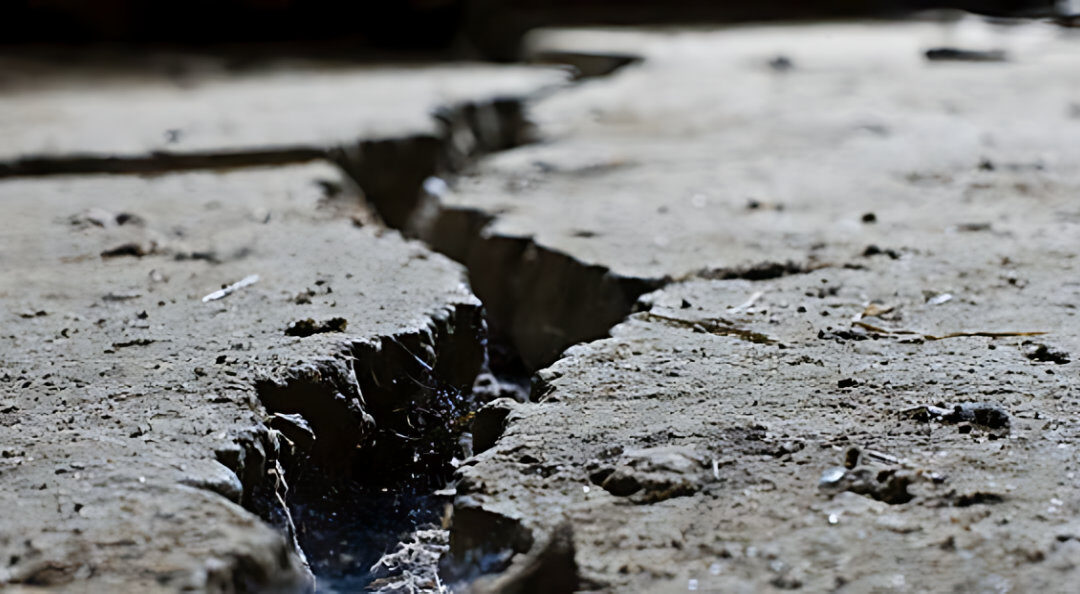Welcome to our comprehensive guide on the importance of concrete maintenance.
This might seem like a trivial topic, but it is much more significant than you may think.
Many property owners overlook a small crack in their concrete, dismissing it as inconsequential.
However, this seemingly insignificant issue can spiral into a serious problem with far-reaching implications, including skyrocketing repair costs, a dip in property value, and even possible legal troubles.
In this guide, we’ll delve into why it’s essential to nip such minor concrete issues in the bud before they morph into substantial challenges.
So, stay tuned to understand why you should be more attentive to your concrete’s health.
The Hidden Costs of Escalating Concrete Repairs
That seemingly insignificant crack or chip in your concrete?
Don’t be fooled. Ignoring it is a gamble with potentially devastating consequences.
It’s a gateway to a cascade of escalating costs far beyond a simple patch job.
The Domino Effect of Deterioration
From Crack to Catastrophe: What begins as a hairline fracture can rapidly evolve into a gaping chasm, compromising the structural integrity of your concrete.
Water’s Insidious Infiltration: As the crack widens, water seeps in, wreaking havoc through freeze-thaw cycles and erosion, accelerating the damage exponentially.
Structural Compromise: This isn’t just about aesthetics; it’s about the very foundation of your property. Neglected cracks weaken the concrete, risking instability and costly structural repairs.
The Tangible and Intangible Costs
Replacement vs. Repair: Delaying repairs often leads to complete concrete replacement, a significantly more expensive undertaking than addressing minor issues promptly.
Liability Risks: A cracked or uneven surface poses a serious trip hazard, potentially leading to costly liability claims if someone is injured.
Loss of Use and Disruption: Extensive repairs or replacements disrupt your daily life or business operations, resulting in lost productivity and inconvenience.
The Spiraling Expense: Professional labor, premium materials, and the sheer scale of a major repair can quickly drain your resources.
Proactive Prevention: The Smart Investment
A Stitch in Time: Remember the adage: “
A stitch in time saves nine.
” Addressing minor cracks and chips promptly is always the most cost-effective solution.
Peace of Mind: Investing in regular maintenance and timely repairs provides peace of mind, knowing your concrete is sound and safe.
Protecting Your Investment: Concrete is a valuable asset. Protect it by addressing small problems before they become big ones.
The Impact of Concrete Damage on Property Value
If you’re preparing to sell your property, understand this: visible concrete damage is a significant red flag for potential buyers, directly impacting your bottom line.
First Impressions Matter:
Potential buyers often form their initial impression of a property within seconds of arriving. Damaged concrete, especially in prominent areas like driveways, walkways, or patios, creates a negative first impression.
It suggests a lack of maintenance and can lead buyers to wonder about other potential problems.
Perceived Cost of Repairs:
Buyers will factor in the cost of repairing or replacing damaged concrete when making an offer.
They often overestimate the cost to protect themselves, leading to lower offers or requests for significant price reductions.
Concerns About Underlying Issues:
As you mentioned, damaged concrete can raise red flags about potential structural problems.
Buyers may worry about foundation issues, drainage problems, or other hidden damage that could be costly to repair.
This can lead to them walking away from a potential purchase.
Safety and Liability:
Damaged concrete poses safety hazards, such as tripping hazards and uneven surfaces.
Buyers are aware of the potential liability risks associated with owning a property with safety hazards.
This can make them hesitant to purchase the property or lead to demands for further price reductions.
Impact on Marketability:
Properties with visible concrete damage may take longer to sell.
They may also attract fewer potential buyers, limiting the number of offers received.
Having a pre-inspection done and repairing the concrete before listing the property can be a very good investment.
The Importance of Prompt Attention to Concrete Issues
Ignoring concrete damage is a dangerous game.
It won’t magically vanish; it will relentlessly worsen, morphing into a costly and hazardous problem.
That seemingly insignificant crack or chip?
It’s a ticking time bomb, poised to compromise the very foundation of your property.
The Illusion of Minor Damage:
It’s easy to dismiss a small crack as insignificant, but concrete is a dynamic material. Small issues quickly escalate.
The forces of nature and everyday use constantly work against concrete’s integrity.
The Compounding Effect of Neglect:
As you emphasized, damage accelerates over time. Water intrusion, freeze-thaw cycles, and chemical reactions exacerbate existing problems.
This leads to a cascade of damage, making repairs increasingly complex and expensive.
The Financial Burden of Replacement:
Replacing a large concrete structure is a major undertaking. The costs of demolition, disposal, materials, and labor can be substantial.
This expense is easily avoidable with timely maintenance and repairs.
The Safety Risks:
Damaged concrete can create hazardous conditions. Uneven surfaces, tripping hazards, and structural instability pose safety risks.
This is especially critical for walkways, driveways, and other areas with high traffic.
The Value of Proactive Maintenance:
Regular inspections and prompt repairs are essential for preserving concrete’s longevity and safety.
This proactive approach saves money, reduces stress, and ensures the long-term integrity of your property.
Paying prompt attention to concrete issues saves you from unexpected expenditures, maintains your property’s value, and ensures safety.
Ignoring these issues might seem like the easy way out in the short term, but the potential long-term costs are far greater.
Whether you are a homeowner or a business owner in Ann Arbor, Michigan, take the time to inspect your concrete regularly and address any issues immediately.
It’s a small investment now that can save you a lot in the future.

